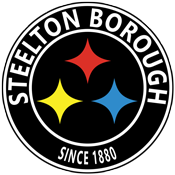Tier II DBP Violation – Jan 14th, 2017
Important Information About Your Non-Emergency Public Notice
The Steelton Borough Water Authority and staff take producing the highest quality drinking water very seriously. Over the past two years, the Authority has invested heavily into infrastructure and operational improvements in response to newer and more stringent environmental testing and reporting standards.
Some residents have asked questions about the Public Notices of non-emergency violations like the one enclosed. Below are answers to frequently asked questions:
Why am I receiving another drinking water violation notice?
HAA5 and TTHM levels are reported on a Running Annual Average, meaning a high result from a previous quarter will impact the average, possibly causing a violation, even if levels are below during certain times of the reporting year.
For this quarter, HAA5 levels were above the MCL at both testing locations. During our reporting year, we have also been well below the level. For example, last quarter HAA5s were reported at .045 and .02 for both locations, well under the .06 MCL. This quarter, unfortunately, the levels were .092 and .102. Contributors to the higher levels include increased river turbidity (cloudiness—a signal of organic matter that causes DBPs). Water plant staff continue to monitor and report DBPs on a regular basis and follow an extensive testing, reporting, and treatment protocol.
Are HAA5s violations unique to Steelton’s water system?
No. Many water systems in the country are dealing with HAA5 violations due to more stringent EPA standards and changes in testing/reporting requirements. Complying with these standards requires older water system’s like Steelton’s to make long term capital improvements that take time.
Why do disinfection byproducts like HAA5s occur in our water?
Virtually all water systems have disinfection byproducts of some level due to the fact that chlorine remains the most widely used chemical for water disinfection in the world. According to the Center for Disease Control, “Chlorine revolutionized water purification, reduced the incidence of waterborne diseases across the western world,” and “chlorination and/or filtration of drinking water has been hailed as the major public health achievement of the 20th century.” It is necessary to chlorinate water to eliminate bacteria that causes immediate emergency health risks. No such emergency health risks are occurring due to Steelton’s continued treatment of water.
While chlorination kills harmful pathogens in water (the primary concern of water treatment facilities), the process of chlorine interacting with organic material in water creates what are known as disinfection byproducts, primarily Trihalomethanes and Haloacetic Acids. Factors such as temperature, turbidity (cloudiness of source water), and source water levels influence the amount of organic matter found in the raw water and, as a result, the amount of disinfection byproducts formed during treatment.
However, it is recognized that the removal of immediate pathogenic threats in water through chlorination takes first priority. Higher levels of disinfection byproducts are considered a Tier II non-acute violation (like the one enclosed). A lack of chlorination and the resulting microbial pathogens that would be present in water, represent a Tier I emergency violation.
Am I required to buy bottled water?
No. The Department of Environmental Protection and EPA clearly state that you do not need to change your source of water.
What if I have concerns about long term health risks associated with HAA5s?
Please consult your physician if you have any concerns about health risks associated with HAA5s.
What is the Water Authority doing to reduce/eliminate DBPs?
Construction of the chlorine contact tank system that will address this issue will begin this spring.
The Steelton Borough Authority awarded the bid for the Disinfection Byproducts Project which involves the construction of a chlorine contact tank that will provide for greater removal of disinfection byproducts before entering the water system. The $3 million project is expected to be completed in the summer.
The Authority is also making key system upgrades in early 2017 based on the findings of a comprehensive distribution system study recently completed.
If you have any additional questions about disinfection by-products or what we are doing, and have done, to ensure your drinking water is safe, please feel free to contact me at 717-939-9842 or Mark Handley at 717-939-0425 Ext. 5110.
Please know that we have worked—and continue to work—diligently to provide the safest drinking water possible. In 2017, customers will see the completion of one of the largest capital improvements to Steelton’s water system in recent memory. These improvements are intended to address the issues outlined above.
Douglas E. Brown, Borough Manager and Authority Secretary
